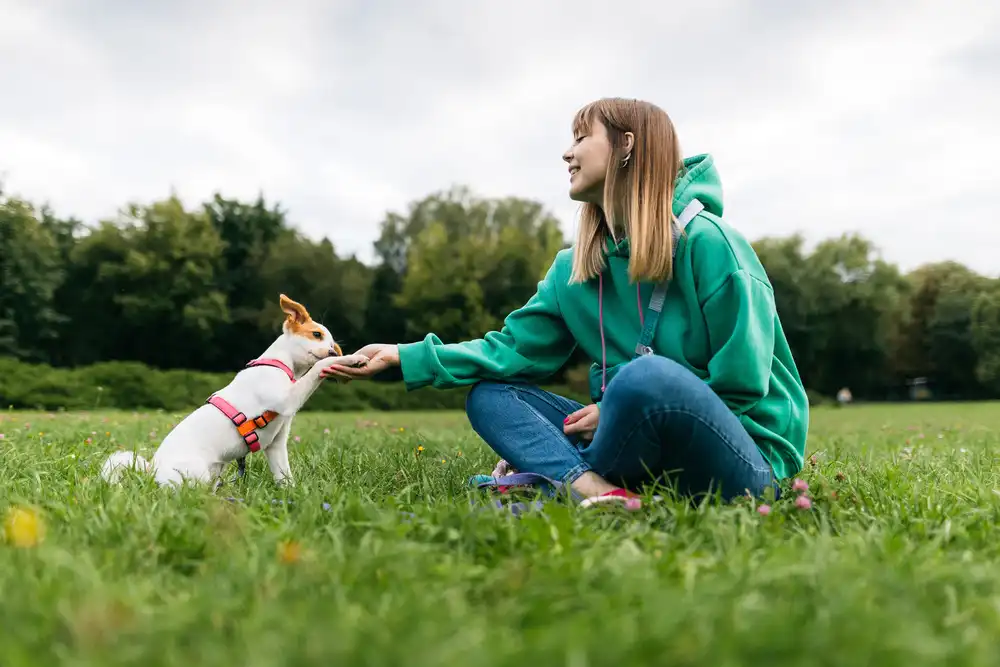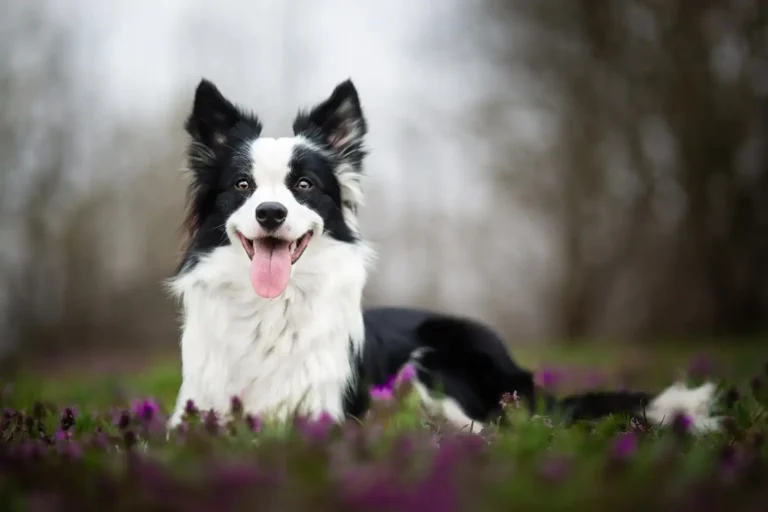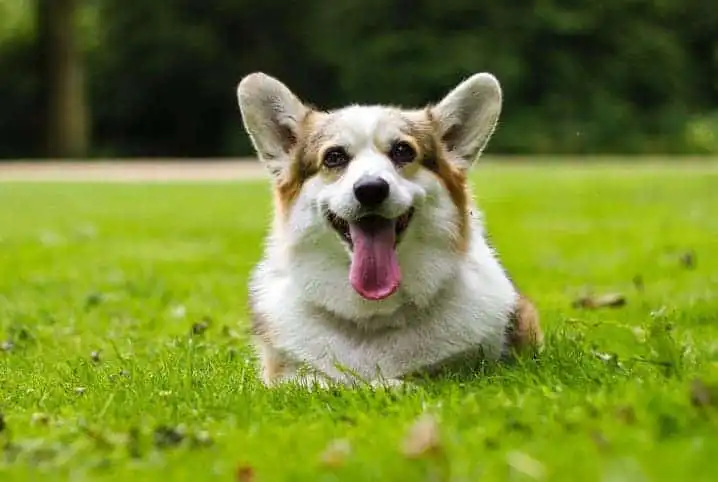Best Dogs for Kids
Communication with a dog not only gives a child a sea of positive emotions, but also helps him grow: it teaches responsibility, develops empathy and the ability to care for others. However, in order for these relationships to develop into a strong and long friendship, first of all, it is necessary to choose the right breed.
What you need to pay attention to when choosing a pet, what dog breeds are considered the best for children and are suitable for keeping inapartment – we tell you about it in the article.
How to Choose a Dog Breed for a Family with Children
When choosing a pet, you should not be guided only by its appearance: you need to consider the habits and character of the breed, the age of the child, as well as the conditions of keeping the animal. All these factors are important for the comfort of family members and the pet itself.
Age of the child. Calm and patient dogs that tolerate pranks and awkward touches are suitable for small children. And a school-age child will be more interested in an energetic pet – it will be an excellent companion for active games and walks.
Housing. In a small living space, it is best to keep a small or medium-sized dog. If there is a lot of free space in the apartment or house, you can get a large pet. It is important that the dog has its own place where no one will disturb it.
Lifestyle. Each breed has its own need for physical activity. Some can be satisfied with short walks, while others need more serious exercise. If you do not have time for long walks and training, it is better to choose calm breeds.
Grooming. Dogs with long hair require labor-intensive care – regular bathing, combing, haircuts. For owners with small children, it may be difficult to carry out all these procedures, so it is advisable to consider breeds with short hair that do not require frequent grooming.
Gender. Families with children should consider females, as they are considered more docile and balanced than males. However, it is worth noting that in sterilized and castrated animals, dominant behavior is not as pronounced.
Once you have decided on the size, gender and other criteria, study the character of suitable breeds in more detail. You can find this information in breed standards, and also ask the opinion of owners or dog handlers.
The Kindest Dog Breeds for Kids
A dog’s attitude towards children depends not only on its breed. The animal’s previous experience and its level of socialization are also important. Therefore, it is not enough for owners to simply choose a breed from the list of “the kindest” – they need to properly raise the animal, provide it with a sense of security and comfort. Only then will the dog be able to show its best qualities.
Retrievers
Golden retrievers and Labrador retrievers deservedly occupy leading positions in the ratings of family dogs. They are distinguished by high intelligence, docile nature and devotion. They are easy to train, get along well with older children and babies.
Sheltie (Shetland Sheepdog)
Smart, obedient and loyal Sheltie Shepherds will be wonderful companions for school-age children. They need moderate physical activity, love to give and receive affection, and be the center of attention.
Poodle
Poodles are intelligent and moderately active pets that are perfect for families with children. They are quite playful, quickly remember the rules of behavior and commands, and are patient with children’s pranks.
Welsh Corgi
These short dogs have a friendly and energetic character. They love to run and play, and need regular walks. Corgis will definitely get along with active children.
Border Collie
Border Collies are kind to children and always look after them. The breed requires significant physical and mental exercise. It is suitable for a family that is ready to actively engage in training and provide the dog with constant employment.
Bernese Mountain Dog
A gentle and affectionate giant who loves children. He is always ready to defend the baby or keep him company in games. But leaving the pet alone with a child is not recommended due to his size.
Newfoundland
Calm and patient Newfoundlands are often called “nanny dogs” – all because of their tender attachment to younger owners. They stoically endure awkward signs of attention from children, and do not allow themselves to show aggression.
Setters
Setters also get along well with children, especially if they lead an active lifestyle. With these pets, you need to be consistent and demanding. Therefore, education should take place under the supervision of an adult and experienced owner.
Dalmatian
Active and loyal, Dalmatians make excellent companions for energetic older children. They require a firm hand in training and regular exercise.
Basset Hound
Basset Hounds have a calm and balanced character, they get along well with children and enjoy spending time at home. They require moderate physical activity and control over their diet.
Small Dog Breeds for Kids
Small dogs are great for keeping in a city apartment. They do not take up much space and do not require heavy physical exercise, they can walk with schoolchildren and teenagers. Despite their compact size, pets also need to be properly educated and trained.
Yorkshire Terrier
“Yorkies” conquer their owners with their charm and lively character. They are very affectionate with their family, but require laborious care for their long hair. The breed is ideal for active children, the dog will be happy to keep them company in games and walks.
Dachshund
Dachshunds are fun, curious, and loyal pets who value being part of the family. They can be quite stubborn and independent, so patience is required during training.
Miniature Schnauzer
Miniature Schnauzers love children and calmly accept signs of attention, but they will not look after them like herding breeds. Also, these pets are unlikely to recognize the authority of a child; they prefer to obey only adult owners.
Pomeranian Spitz
Spitz are quite sociable, energetic and love to be the center of attention. They will happily support any activity, will happily play with children and frolic in the fresh air.
Papillon
Papillons are easy to learn commands and tricks, and school-age children can be involved in training these dogs. They are incredibly affectionate, loyal, patient, and people-oriented.
Italian Greyhound
Italian Greyhounds are affectionate dogs that can find an approach to any owner. They are calm and unobtrusive, but always ready for games and communication. It is better for children to interact with the Italian Greyhound under the supervision of adults, so that they do not accidentally hurt the fragile animal.
Chinese Crested
Chinese Cresteds are cheerful, playful and energetic. They enjoy being in the company of people, lying on laps and receiving affection. The Crested dog can find a common language with children, if they treat it with care.
Bolognese
Bolognese do not require intense physical exercise and adapt well to indoor life. They are generally patient and loyal to children, and do not show aggression when handled correctly.
Dog Breeds for Children with Allergies
Allergic reactions to dogs are caused not by the fur, but by protein compounds contained in the animal’s saliva, urine, dandruff, and sebum. These substances are spread through the air along with the fur and skin particles, so even short-haired and hairless dogs can cause allergies in a child.
The intensity of allergic reactions depends on the concentration of allergens in the air and the individual sensitivity of the person. If children are prone to allergies, you should consult a doctor before buying a dog. He will tell you whether you can have a pet.
At what age can a child get a dog
Preschool age (up to 6 years). At this age, a child cannot yet take care of a dog on their own. Therefore, acquiring a pet is only possible if the parents are ready to take on all the responsibilities: walking, feeding, performing hygiene procedures, visiting the clinic, upbringing and training. The baby can only learn to interact with the animal.
Primary school age (7–10 years). Older children are already capable of performing some tasks related to caring for a dog, such as feeding it or walking it under adult supervision. However, responsibility for the animal still rests on the shoulders of the parents.
Senior school age (11–14 years). At this age, a child can already walk and feed a dog, play with it, and perform hygiene procedures. Parents must supervise training and veterinary care.
Adolescence (15 years and older): Adolescents are usually ready to take responsibility for owning a dog. They can make their own decisions about the care, training, and health of the animal. However, they still need financial support from their parents.
Choosing a dog for a family with children is a responsible step that should be prepared in advance. Study the characteristics of different breeds, discuss the decision with all your loved ones and soberly assess your capabilities. Do not be afraid to ask for advice from experienced dog handlers and breeders. You can also visit the shelter and talk to the staff – they will help you choose a pet that will suit your family and give you love for many years!







